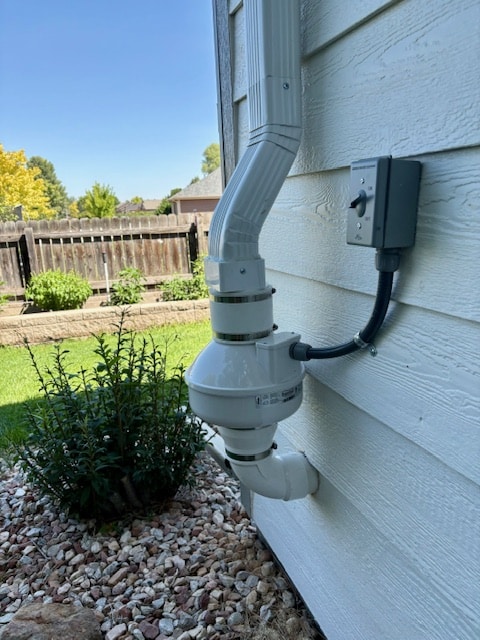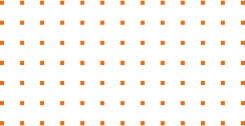Upgrading Your Home's Passive System
Radon System Activation
Many homes built in recent years feature Radon Resistant New Construction, which includes a passive radon reduction system. While this is a good start, these systems often fail to reduce indoor radon levels to a safe range.




The Activation Process: From Passive to Active
An existing passive system relies on the stack effect, the natural movement of air as it warms and rises, to vent radon. By adding a specialized vent fan to this system, we create a continuous negative pressure beneath your home’s foundation. This vacuum actively pulls radon from the soil before it can enter your living space.
The activation process is handled by certified Radon Contractors and typically involves

Fan Integration
A powerful, yet quiet, fan is installed on the existing pipe, usually in a low-traffic area like a garage or attic.

System Sealing
To ensure maximum effectiveness, any foundation cracks or gaps are professionally sealed. This is particularly important for homes with crawl spaces, where a vapor barrier may also be installed to further prevent gas entry.

Performance Monitoring
A u-tube manometer is installed on the system to provide a visual check that the fan is creating the necessary suction. This allows you to easily monitor the system's performance.

Post-Activation Testing
Following the upgrade, a final Radon Testing is conducted using electronic measurements to confirm that the new active radon mitigation system has successfully lowered radon levels to a safe range.
Frequently Asked Questions
1. How does an active system differ from a passive one?
A passive system relies on natural air currents (the stack effect) to vent radon. An active radon mitigation system uses a fan to create a constant vacuum, actively pulling radon from the soil, which is a much more effective method of radon reduction.
2. What certifications should a radon contractor have?
You should always choose a contractor certified by a reputable organization, such as the National Radon Proficiency Program or the National Radon Safety Board, to ensure they meet the highest standards for active radon mitigation.
3. Will the fan be a major energy expense?
No, modern radon vent fans are designed to be extremely energy-efficient. They typically consume no more power than a standard light bulb, so the cost to run them is minimal.
Testimonials
What Our Clients Say?
Trustindex verifies that the original source of the review is Google. Very easy to work with, and very professional.Trustindex verifies that the original source of the review is Google. Kent and the folks at ColoRadon are awesome!! I have an old house (1920) that posed a few mitigation challenges. The ColoRadon guys were able to expertly solve for those challenges, and successfully mitigate the radon in our home, sweet home!Trustindex verifies that the original source of the review is Google. Kent and his employee Kevin are exceptional. They listened to our concerns and devised a plan that would work for us. Our radon measured 40.0 - 41.0 which was unbelievable to me but that was the results of our mail in test. After Kent installed the mitigation system our test came back at 2.9. I cannot even tell you how happy this made me. Thanks to Kent and his thinking outside the box he made a system that worked! Kent also installed a radon mitigation system in another one of my homes two years ago and it's working fabulously. I highly recommend ColoRadon. Barbara HarrisTrustindex verifies that the original source of the review is Google. We were in the middle of moving in our new house and Kent with Colorado Randon made everything so simple, it seemed like so many other things kept going sideways and anything that had to do with his tasks got done amazingly! Thanks for being on time with all of your services and even going out of the way to serve us in our Radon needs. I appreciate everyone I talked to and worked on our system, professional, and top quality services with great pricing! I absolutely will recommend Kent and this company to everyone.Trustindex verifies that the original source of the review is Google. We’ve worked with Kent several times, always a pleasure! He’s tested for radon and installed radon mitigation systems for us a few times. We won’t go anywhere else - highly recommend!Trustindex verifies that the original source of the review is Google. Kent is wonderful! He responded to my request for service super quick and was at our house the following day for a consultation. He was knowledgeable and professional. He answered all of our questions and provided us with a quote on the spot. He installed our mitigation system in a timely fashion and left our space cleaner than he found it. I highly recommend ColoRadon for your radon mitigation needs! Thank you Kent! :)Trustindex verifies that the original source of the review is Google. Kent did an amazing job. He did a great job communicating when he was going to be late. He was professional, courteous and cleaned up after himself. He was very thorough in explaining the process and the test after the installation.Trustindex verifies that the original source of the review is Google. We were referred to Kent thru our realtor when we moved to Colorado. Kent was awesome to deal with while we still lived out of state. He checked in when we arrived to complete a 2nd test after our radon mitigation installation. He was awesome to work with and easy to get ahold of!Trustindex verifies that the original source of the review is Google. Kent has worked on my home in other capacities in the past, but with ColoRadon, he removed a pigeon infestation and added netting around my solar panels on a roof that I was not equipped to deal with. He was responsive in scheduling, as always, did great work, cleaned up the huge mess it made and came in under budget. Can’t recommend him more if you need handyman work or radon work done! (He did radon mitigation, mold mitigation, and roof repair on my last home).Trustindex verifies that the original source of the review is Google. Great service, Kent is there when he says he will be, performs the work needed efficiently - cleans up after. Stays in contact thru the entire process. Highly recommended! He genuinely cares about resolving any radon issues.

Get In Touch
Protect Your Home with ColoRadon
Radon is a serious health threat, but with an active radon mitigation system, it’s one you can easily manage. Don’t rely on a passive system to protect your family. Upgrade to an active system with ColoRadon, a trusted partner of organizations like the Environmental Protection Agency and Protect Environmental. Our certified technicians can transform your passive setup into a high-performance radon reduction system, providing you with peace of mind.
Contact ColoRadon today to schedule your system activation and take a critical step toward a healthier home.
